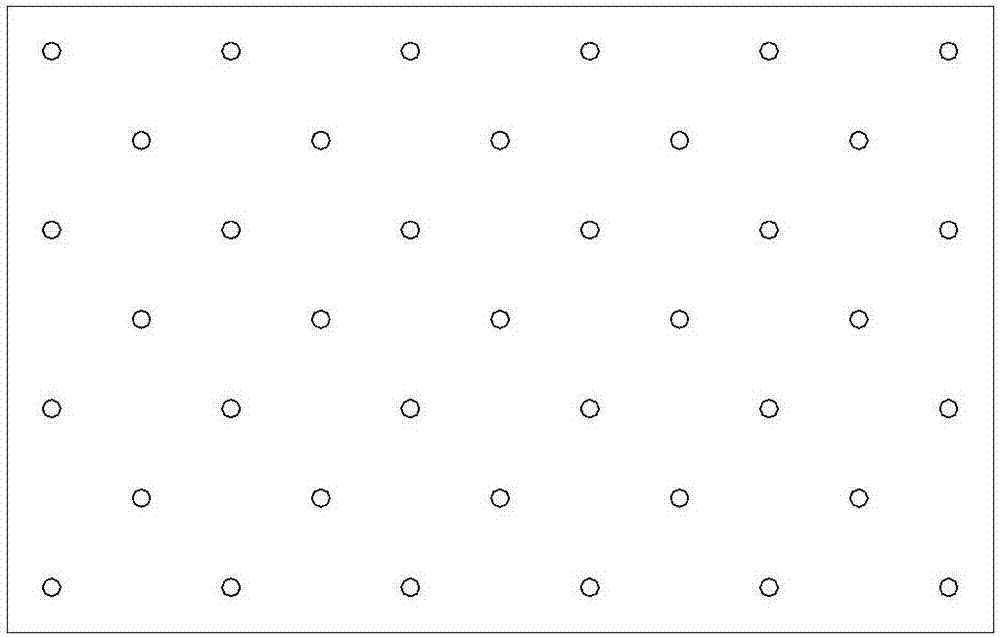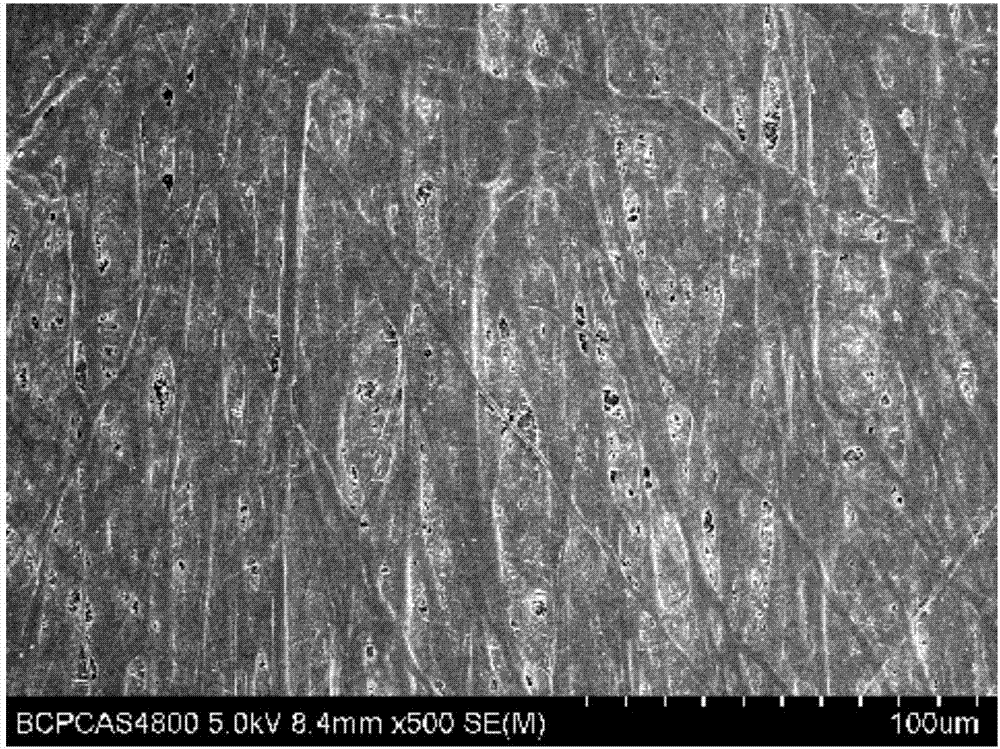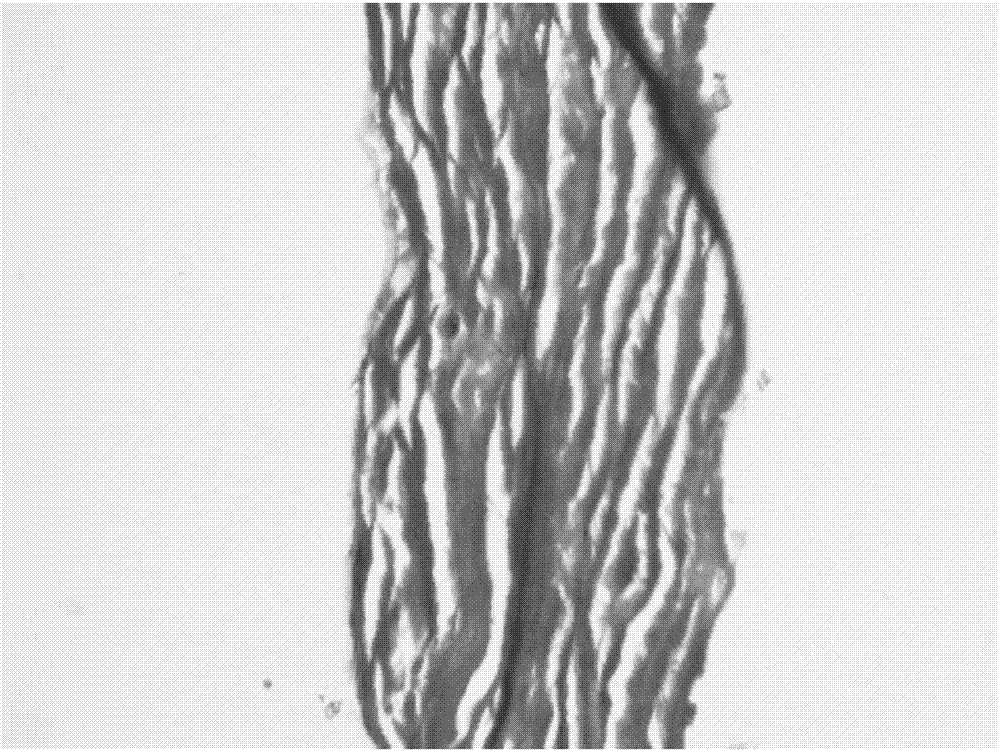Biological anti-adhesion material, preparation method and application thereof
An anti-adhesion and biological technology, which is applied in the field of biomaterials for medical devices, can solve the problems of chitosan gel or solution, such as easy flow, insufficient mechanical strength and toughness, and difficulty in forming high concentrations, so as to achieve good biocompatibility, Anti-adhesion, anti-adhesion effect
- Summary
- Abstract
- Description
- Claims
- Application Information
AI Technical Summary
Problems solved by technology
Method used
Image
Examples
Embodiment 1
[0047] The preparation method of the animal-derived implantable biological anti-adhesion material in this embodiment includes the following steps:
[0048] (1) Organization pre-processing:
[0049] Take the small intestinal submucosa tissue material and divide it into the specified size of 10cm wide and 15cm long, remove the lymphatic tissue, rinse with tap water 3 times, and then rinse with purified water until there is no stain on the surface, and then put the cleaned small intestinal submucosa tissue material on the screen Wait for the water filter device, let it stand for more than five minutes, and drain the water.
[0050] (2) Virus inactivation:
[0051] Use peracetic acid-ethanol solution to soak small intestinal submucosa tissue material for virus inactivation, and this process can be carried out in a stainless steel bucket. The concentration (percentage by volume) of peracetic acid in peracetic acid-ethanol solution is 1%, the concentration (percentage by volume) o...
Embodiment 2
[0068] Carry out performance test to sample in embodiment 1, test item and result are as follows:
[0069] 1) DNA residue: According to the fourth part of the biological agent residual DNA detection method "Chinese Pharmacopoeia" 2015 edition, the fluorescence staining method was used to detect the DNA residue of the sample provided in Example 1, and the result: the DNA residue of the sample provided in Example 1 The amount is less than 2.89±0.36ng / mg.
[0070] 2) Clearance rate of galactosidase (α-Gal): Take 2mg each of animal-derived biological material Gal positive reference substance and Gal antigen negative reference substance, add 1ml of lysate, lyse for 30-90min, and prepare 20, 10, 5 , 2.5, 1.25, and 0.625 μg of Gal standard curve samples, take 50 mg of each test product before and after immunogen removal, add 2 ml of lysate, and lyse for 30-90 min; take the supernatant after the lysate reacts with M86 antibody, add 96 Orifice plate, add secondary antibody, add chromo...
Embodiment 3
[0082] Biocompatibility experiments were carried out on the samples in Example 1, and the detection items included: pyrogen, cytotoxicity, delayed hypersensitivity reaction, intradermal reaction, acute systemic toxicity, Ames test, mouse lymphoma cell mutation test, chromosomal aberration , implantation, subchronic toxicity.
[0083] 1) Pyrogen
[0084] The test solution was prepared according to the ratio of extraction medium at a mass ratio of 1:5, 37±1°C, 72±2hr, extraction medium: normal saline. According to the method specified in GB / T 14233.2-2005, the product has no pyrogen reaction.
[0085] 2) Cytotoxicity
[0086] Prepare the test solution according to the ratio of extraction medium with a mass ratio of 1:5, 37±1°C, 24±2hr, extraction medium: MEM medium containing serum. Take the test solution and carry out the test according to the test method specified in GB / T16886.5-2003, and the result is that the cytotoxic reaction of the product is not greater than grade 1. ...
PUM
| Property | Measurement | Unit |
|---|---|---|
| Tensile breaking strength | aaaaa | aaaaa |
| Longitudinal tensile strength | aaaaa | aaaaa |
Abstract
Description
Claims
Application Information
 Login to View More
Login to View More - R&D
- Intellectual Property
- Life Sciences
- Materials
- Tech Scout
- Unparalleled Data Quality
- Higher Quality Content
- 60% Fewer Hallucinations
Browse by: Latest US Patents, China's latest patents, Technical Efficacy Thesaurus, Application Domain, Technology Topic, Popular Technical Reports.
© 2025 PatSnap. All rights reserved.Legal|Privacy policy|Modern Slavery Act Transparency Statement|Sitemap|About US| Contact US: help@patsnap.com



